Describe the Functional Use of a Data Warehouse
The natural way to understand the requirements of the Data Warehouse is to simply describe the Business Entities and Processes. The process of transforming data.

What Is Datamart What Is Data Data Warehouse Hold On
Data warehouse platforms are different from operational databases because they store historical information making it easier for business leaders to analyze data over a specific period of time.

. You can also access data from the cloud easily. A data warehouse also helps in bringing down the costs by tracking trends patterns over a long period in a consistent and reliable manner. Data warehouse provides consistent information on various cross-functional activities.
The goal of a data warehouse is to ensure that data is accurate current and accessible which is also the goal of the auditing process. The cleaning of data. A data warehouse can ensure data integrity through implemented controls for roles and responsibilities related to extracting data from source systems and migrating to the data warehouse.
The warehouse makes that data available to all authorized users while also offering support in the form of in-depth analysis and detailed accessible reporting. Data warehouse helps you to reduce TAT total turnaround time for analysis and reporting. Rather he focused on the functionality of a data warehouse.
A data warehouse functions as a data consolidation system. Essentially the enterprise data warehouse is a database that stores all information associated with your organization. This is a functional view of a data warehouse.
Data warehouse helps users to access critical data from different sources in a single place so it saves users time of retrieving data information from multiple sources. A data warehouse is a type of data management system that is designed to enable and support business intelligence BI activities especially analytics. In computing a data warehouse also known as an enterprise data warehouse is a system used for reporting and data analysis and is considered a core component of business intelligence.
It is refreshing to see a new perspective. The data from here can assess by users as per the requirement with the help of various business tools SQL clients spreadsheets etc. For example even though your database records sales data for every minute of every day you may just want to know the total amount sold each day.
In previous lessons we have discussed how Fact represent Business EventsProcesses and Dimensions represent business entities. The data within a data warehouse is usually derived from a wide range of. The mantra for Data Warehouse design is Model Reality.
Data warehouses are solely intended to perform queries and analysis and often contain large amounts of historical data. A data warehouse stores current and historical data for the entire business and feeds BI and analytics. Performing OLAP queries in operational database degrade the performance of functional tasks.
From a technical point of view a data warehouse is a database. Cleaning data is one of the most important steps in business. It is also supporting ad-hoc reporting and query.
A data warehouse is a place where data collects by the information which flew from different sources. They store current and historical data in one single place that are used for creating analytical reports for workers. DWs are central repositories of integrated data from one or more disparate sources.
It provides end-users with the ability to easily generate reports dashboards graphs and other forms of data inquiry. An X-Ray of a Data Warehouse. A data warehouse provides us a consistent view of customers and items hence it helps us manage customer relationship.
Data warehousing can allow companies to store large amounts of business intelligence data in a single system and can involve the integration and consolidation of analytical report data and data from ad-hoc queries to aid business professionals in evaluating and making important business decisions. Usually the data pass through relational databases and transactional systems. Kimball did not address how the data warehouse is built like Inmon did.
A data warehouse is a copy of transaction data specifically structured for query and analysis. A data warehouse is a system that stores data from a companys operational databases as well as external sources. The data warehouse serves as the source of information for BI visualization tools.
The data is loaded. Data warehouse allows business users to quickly access critical data from some sources all in one place. Such systems can organize and present information in specific formats to accommodate the diverse needs of various users.
Data warehouses use a database server to pull in data from an organizations databases and have additional functionalities for data modeling data lifecycle management data source integration and more. Data Warehouse Systems serve users or knowledge workers in the purpose of data analysis and decision-making. Data warehouse thus plays a vital role in creating a touch base in the data industry.
Data warehouses use OnLine Analytical Processing OLAP to analyze massive volumes of data rapidly. Data Warehouse helps to integrate many sources of data to reduce stress on the production system. Ralph Kimball provided a more concise definition of a data warehouse.
Data warehouse thus helps in getting business trends and patterns which can later be presented in the form of reports which provide insight for how to go ahead in the process of business growth. This process gives analysts the power to look at your data from different points of view. As database helps in storing and processing data a data warehouse helps in analyzing it.
Data Warehouse is used for analysis and decision making in which extensive database is required including historical data which operational database does not typically maintain.

What Is The Future Of Data Warehousing Data Warehouse Historical Data Data
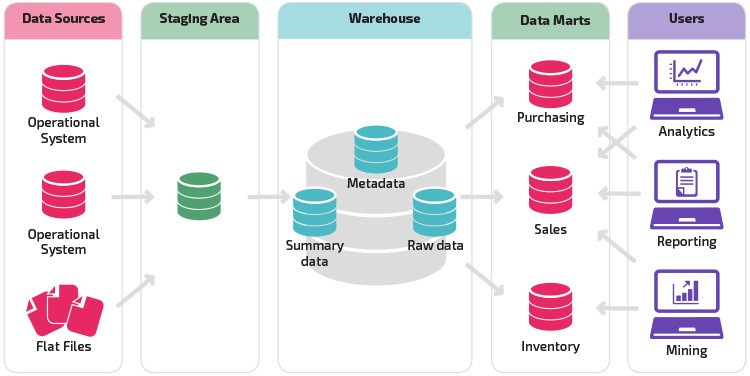
Data Warehouse Architecture Types Components Concepts Astera
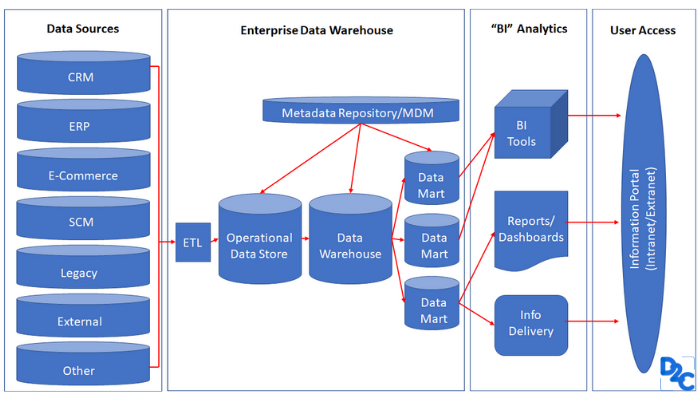
Understanding Data Warehouse Components Properties And Characteristics D2c
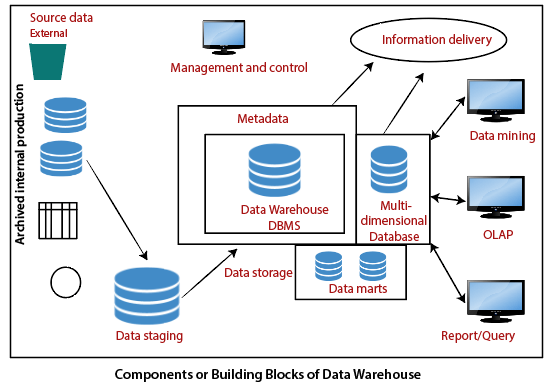
Data Warehouse Components Data Warehouse Tutorial Javatpoint

What Is Data Warehousing Concepts Tools Examples Astera
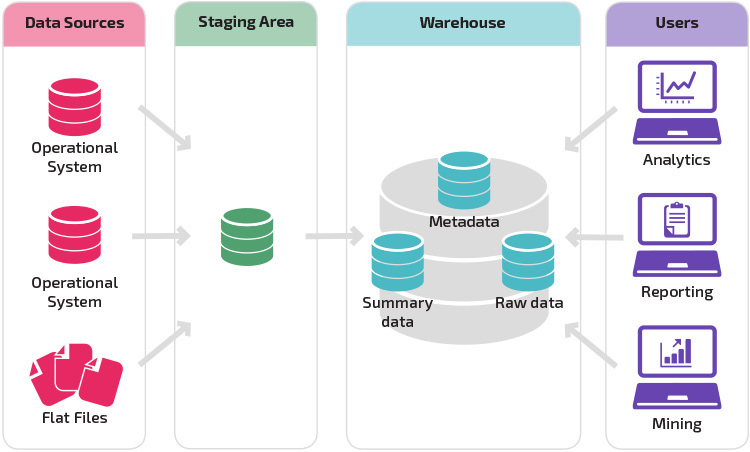
Data Warehouse Architecture Traditional Vs Cloud Panoply

Data Warehouse Testing Sqa Solution Data Warehouse Master Data Management Data Science

Data Warehouse Definition And Examples Astera
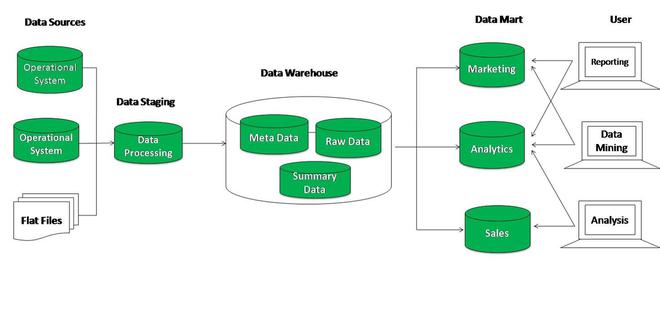
Top 15 Popular Data Warehouse Tools Geeksforgeeks
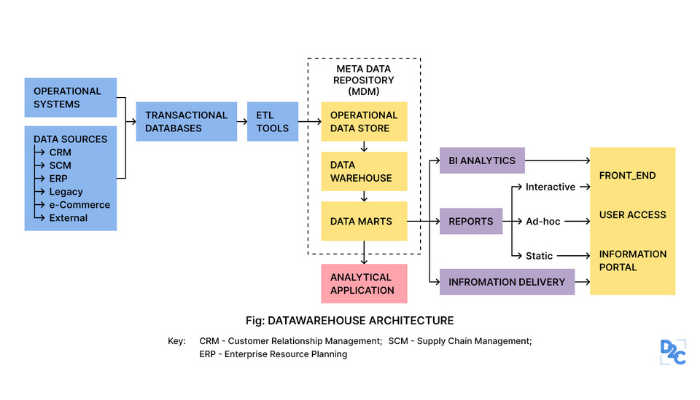
Understanding Data Warehouse Components Properties And Characteristics D2c

Data Warehousing Company Data Warehouse Data Functional Analysis

Data Warehouse Architecture Traditional Vs Cloud Panoply

What Is Data Mart A Data Mart Is Focused On A Single Functional Area Of An Organization And Contains A Subset Of Data Stored Data Warehouse What Is Data Data

What Is Dimensional Model In Data Warehouse Big Data Path Data Warehouse Data Data Structures

What Is Data Warehouse Data Warehouse Is An Information System That Contains Historical And Commutative Data From Single Or M Data Warehouse What Is Data Data

Data Warehouse Requirements Template Data Warehouse For Data Warehouse Business Requirements Template Document Templates Business Requirements Data Warehouse
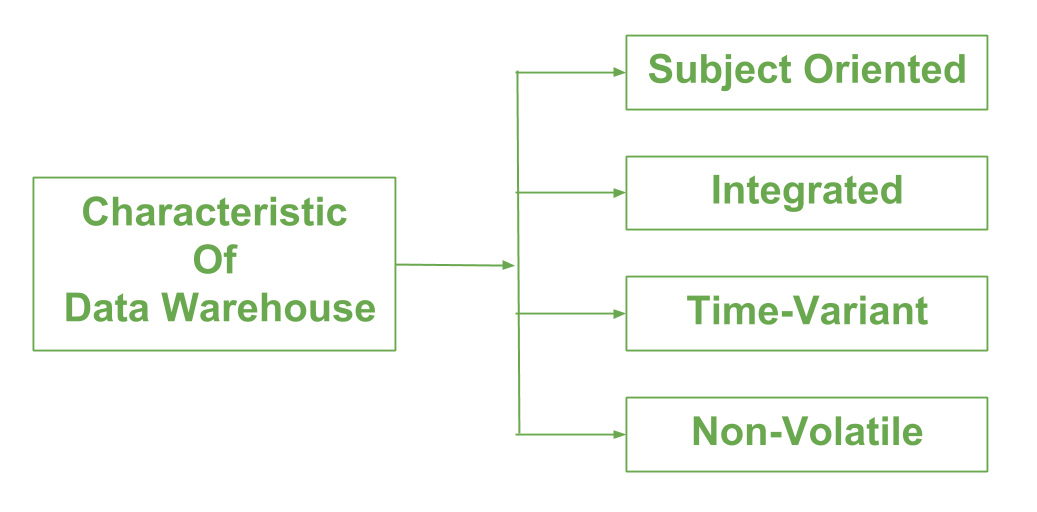
Characteristics And Functions Of Data Warehouse Geeksforgeeks

Etl Framework For Data Warehouse Environments Data Warehouse Artificial Intelligence Machine Learning Applications

Comments
Post a Comment